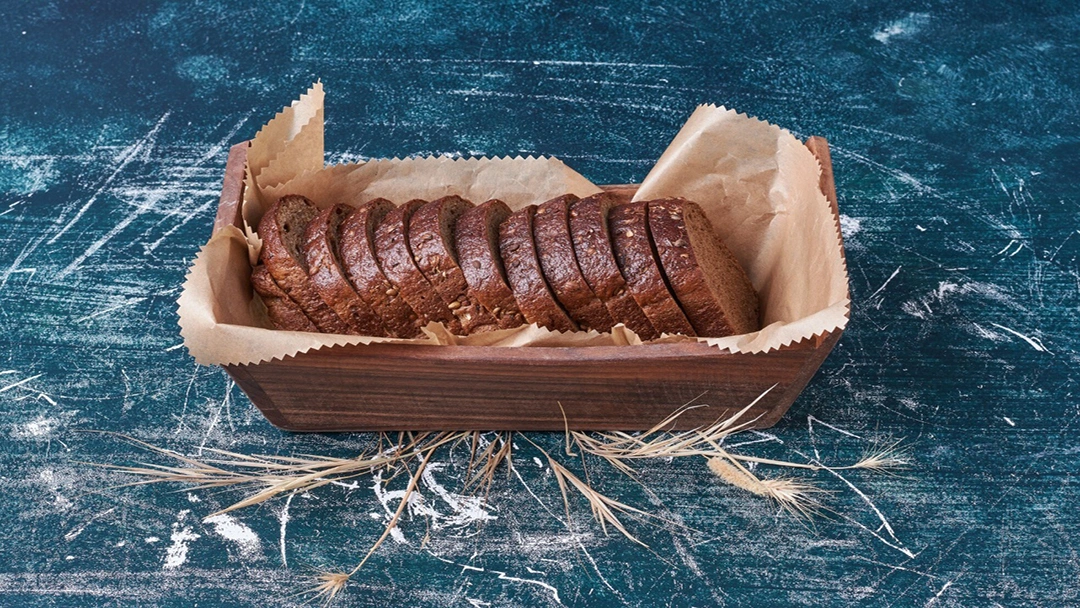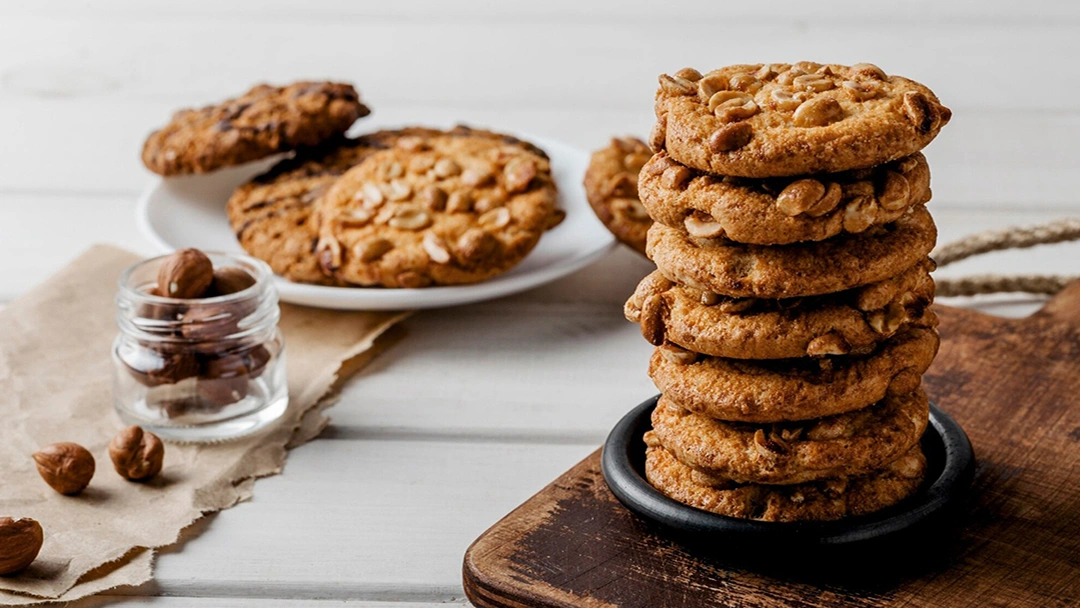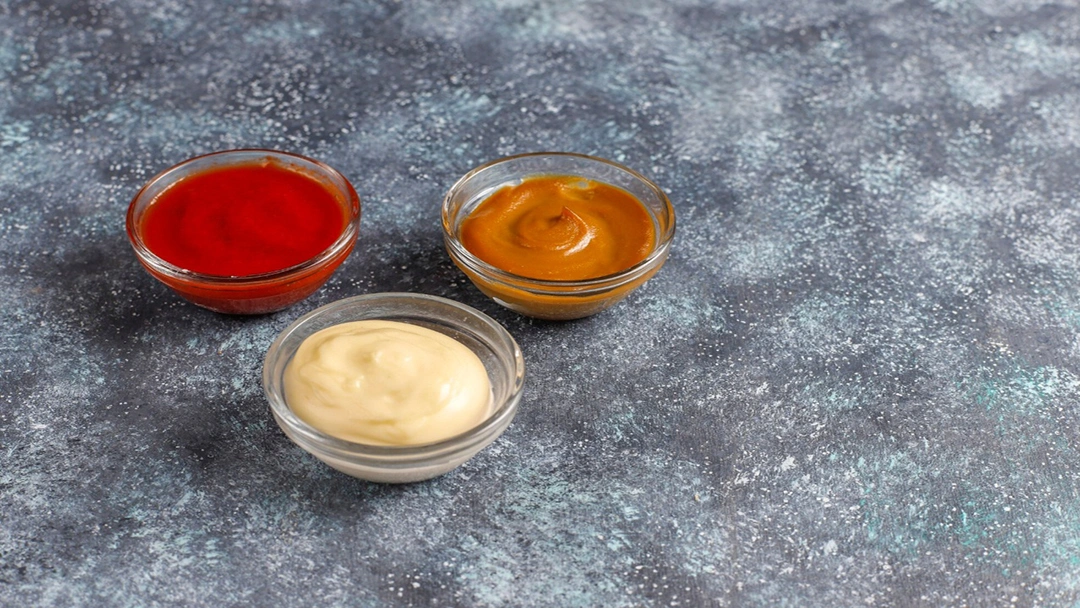Long-Term Benefits
- Sustainable Weight Management
- Lower Risk of Chronic Diseases
- Cardiovascular Health
- Cellular Repair and Longevity
- Brain Health and Neuroprotection
- Anti-Inflammatory Effects
Short-Term Benefits
- Weight Loss
- Insulin Sensitivity
- Fat Burning
- Mental Clarity and Focus.
- Digestive Rest
- Appetite Regulation
[cta-meetings]
Intermittent fasting comes in different types. A 16 hour fast is a common one, but there is another popular type, good for starters, called a 14-hour fast. Let’s compare the two and find out the differences and similarities.
Learn More: The 60-Hour Fast Benefits and Results: Is It Safe?
Dr. Rhonda Patrick (Biomedical Scientist and Health Researcher):
"The 16/8 intermittent fasting method is a powerful tool for improving metabolic health, reducing inflammation, and promoting longevity."
16-Hour Fast vs 14-Hour Fast
- As mentioned above, the 16 hour fast includes fasting 16 hours a day and eating for 8 hours on the same day. The fasting period includes avoiding calorie intake to make the body rely on fat for energy and melt fat. You can drink water and other non-caloric beverages during the fasting period.
- The 14-hour fast is another type of intermittent fasting, where you need to fast for 14 hours and eat for 10 hours. This method has a shorter fasting period and is more suitable for beginners who find it challenging to avoid food for an extended period.
The Difference Between 16- and 14-Hour Fast
- Fasting Duration: The 16 hour fast includes fasting for 16 hours each day, while the 14-hour fast means fasting for 14 hours each day.
- Eating Window: A 16 hour fast provides an 8-hour eating period, while the 14-hour fast lets you eat during a 10-hour period.
- Adaptation Period: You may need a longer time to adapt to a 16 hour fast than the 14-hour fast, which is more suitable for beginners.
- Flexibility: The 14-hour fast is slightly more flexible, providing a longer eating period.
- Caloric Intake: A 16 hour fast can result in faster weight loss as it restricts calories for a longer period.
Learn More: The 18-Hour Fast: Does It Work for Weight Loss?
[cta-meal-plan]
Is a 16 Hour or a 14-Hour Fast Better?
Choosing one of these fasting methods as better is highly dependent on your personal needs, goals, and status, as both can be effective in health and weight loss.
However, as mentioned earlier, a 14-hour fast can be better for beginners, and a 16 hour fast can be better for more experienced dieters who need faster results.
Another popular intermittent fasting method is the 12-hour fast. The following section will compare it with the 16 hour fast to see which one can be a better option.
Learn More: What Is Fat Fasting? Carnivore Method, Meal Plan, and Food List
A 16-Hour Fast Boost Weight Loss and Metabolism
Studies have shown that intermittent fasting, such as the 16-hour fast, can help reduce overall caloric intake by restricting the eating window. This often leads to weight loss and improved metabolic markers. A study in the journal Obesity found that participants who followed a 16/8 fasting schedule consumed fewer calories and lost significant body fat compared to a control group (Source: National Institutes of Health (NIH)).
16-Hour Fast vs 12-Hour Fast
- The 16:8 or 16 hour fast includes consuming no calories for 16 hours and eating during an 8-hour period.
- The 12-hour fast divides a day into two equal periods of fasting and eating.
[cta-gocarnivore-plans]
The Difference Between 12- and 16-Hour Fast
- Fasting Duration: The 16 hour fast involves fasting for 16 hours a day, while the 12-hour fast includes fasting for 12 hours per day.
- Eating Period: The 16 hour fast allows an 8-hour eating period, while the 12-hour fast gives you a 12-hour eating period.
- Caloric Intake: Longer fasting in the 16 hour fast means a slightly greater calorie deficit, which helps faster weight loss.
- Adaptation Period: The 12-hour fast is a better option for beginners who can’t fast for longer hours, and it’s easier to adapt.
- Flexibility: The 12-hour fast is more flexible in terms of meal timings.
Is 16- or 12-Hour Fast Better?
If you’re a beginner or have a busy schedule and can’t fast for longer periods, a 12-hour fast can be a better option. However, if your goals and lifestyle allow a longer fasting period, you can try a 16 hour fast.
Another common fasting method is the 18-hour fast, which is tried by many dieters worldwide for health and fitness reasons. Let’s review it and compare it with the 16 hour fast to see which one is better for us.
Learn More: Taking Medications on Intermittent Fasting: Do Medications Break a Fast?
[cta-meetings]
16-Hour Fast vs 18-Hour Fast
- A 16 hour fast means avoiding calories for 16 consecutive hours and consuming the necessary nutrients in the 8-hour eating period.
- The 18-hour fast includes an 18-hour fasting period and a 6-hour eating window.
A 16-Hour Fast Improves Diabetes
Research published in Cell Metabolism indicates that intermittent fasting can improve insulin sensitivity and lower insulin levels, reducing the risk of type 2 diabetes. This improvement is partly due to the prolonged fasting period allowing insulin levels to drop, which facilitates fat burning.
The Difference Between 18- and 16-Hour Fast
- Fasting Duration: The 16 hour fast includes fasting for 16 hours, while the 18-hour fast includes fasting for 18 consecutive hours.
- Eating Window: The 16 hour fast allows 8 hours of eating, while the 18-hour fast includes a 6-hour eating period.
- Caloric Intake: The 16 hour fast provides a good calorie deficit, but the 18-hour fast provides a longer calorie restriction, which may result in faster weight loss.
Is an 18-Hour Fast Better Than a 16-Hour Fast?
While the 18-hour fast can result in faster weight loss, it may not be sustainable or suitable for everyone, especially for beginners or those with certain health concerns. You need to choose a method that best suits your situation and goals.
Now that we’ve learned about different types of intermittent fasting, let’s see how to do the most popular one, i.e., the 16 hour fast.
[cta-meal-plan]
How to Do 16-Hour Fasting?
Here is a step-by-step guide to starting a 16 hour fast.
Choose Your Fasting Window
Decide when you will eat the meals. 12 pm to 8 pm or 1 pm to 9 pm are common time frames, but choosing a time depends on your goals and preferences.
Eat Balanced Meals
Ensure to consume balanced, nutrient-dense meals to provide the necessary nutrients during the eating period. You can have vegetables, fruits, lean proteins, healthy fats, and whole grains.
Start with Dinner
If you're a beginner, fasting can be easier after dinner, as a long time will pass during sleep. For example, if you finish dinner by 8 pm, you won't eat until 12 pm the next day.
Stay Hydrated During Fasting Period
Drink enough water during the fasting period. You can also drink other non-caloric beverages like black coffee and tea, which curb hunger and help with hydration.
Avoid Calories During Fasting
Consume no calories during the fasting period, i.e., you can’t eat food, sugary beverages, or snacks.
Manage Hunger and Cravings
Manage hunger by keeping yourself busy and taking your mind off fasting. Do your favorite activities, and remind yourself of your health and fitness goals.
[cta-gocarnivore-plans]
Break the Fast Gradually
Break the fast with a balanced meal. Avoid overeating and undereating, and let your body adapt to the new eating style.
Be Consistent
If your body and the healthcare professional allow, try weekly fasting to help your body adapt sooner and get the best results.
Listen to Your Body
Monitor your body’s reactions and make modifications to make the most of the fasting. Seek medical help if you see extreme or unusual reactions.
Learn More: Carnivore Diet Fasting: Types, Food List & Meal Plan
A 16-Hour Fast Improves Cellular Function
Fasting for 16 hours can stimulate autophagy, a cellular repair process that removes damaged cells and proteins, potentially slowing down aging and reducing the risk of diseases like cancer and Alzheimer’s. This process was highlighted in a study published in Nature which found that intermittent fasting can enhance cellular repair mechanisms.
What Can I Eat?
You can’t eat anything during the fasting period (no calories), but you can have various foods during the eating period. Here are the foods you need to consume to provide the necessary nutrients.
- Vegetables: Leafy greens, broccoli, cauliflower, carrots, bell peppers, etc.
- Fruits: Whole fruits like berries, apples, oranges, bananas, etc.
- Protein: Chicken, turkey, fish, tofu, legumes, lentils, beans, and other lean protein sources
- Healthy Fats: Avocado, nuts, seeds, olive oil, etc.
- Whole Grains: Quinoa, brown rice, oats, whole wheat, etc.
- Dairy or Dairy Alternatives: Greek yogurt, cottage cheese, almond milk, etc.
- Beverages: Water, tea, coffee, etc.
Learn More: 36-Hour Fast: Benefits, Autophagy and Weight Loss Results
[cta-meetings]
What Can I Drink?
You can drink no-calorie drinks during the fasting period, including:
- Water
- Black Coffee
- Herbal Tea
- Plain Tea
During the eating period, you can drink normal beverages, but it’s better to avoid high-calorie drinks.
A Sample 16-Hour Schedule
- 7:00 PM - 9:00 PM (Eating Period): Start with a small, balanced dinner, including lean protein, vegetables, and healthy fats.
- 9:00 PM - 7:00 AM (Fasting Period - Overnight): No food or calories; just drink water, herbal tea, or black coffee if desired.
- 7:00 AM - 12:00 PM (Fasting Period - Morning): Continue fasting, drinking water, herbal tea, or black coffee.
- 12:00 PM (Break Your Fast): Lunch: Break your fast with a nutritious lunch, including protein, vegetables, healthy fats, and whole grains.
- 12:00 PM - 7:00 PM (Eating Period - Afternoon and Evening): Eat snacks and dinner as you like. Greek yogurt with berries, a handful of nuts, or a piece of fruit are healthy snack options.
- 7:00 PM - 9:00 PM (Pre-Fasting Period - Evening): Finish your last meal by 7:00 PM to start the next fasting period.
A 16-Hour Fast Regulates Hormones
Fasting helps regulate hormones, such as increasing norepinephrine and human growth hormone (HGH), which aid in fat burning and muscle maintenance. A study in The Journal of Clinical Endocrinology & Metabolism reported that intermittent fasting could boost HGH levels by up to five-fold.
[cta-meal-plan]
How to Break a 16:8 Fast?
The following tips are essential to break the fast in a healthy way.
- Start Slowly: Avoid large, heavy meals to let your body adapt to changes, and don’t pressure your digestive system.
- Drink Water: Start drinking a glass of water to rehydrate your body.
- Choose Nutrient-Dense Foods: Consume high-protein meals containing enough nutrients, vitamins, and minerals.
- Add Variety to Your Meals: Eat different food groups, including vegetables, lean proteins, healthy fats, and complex carbohydrates.
- Avoid Sugary and Processed Foods: It’s safe to avoid sugary or processed foods even during the eating period to get results faster.
- Listen to Your Body: Be careful about your body’s reactions and cues to make necessary modifications.
- Avoid Overeating: Let your digestive system get used to the new eating habit.
- Keep It Healthy: Avoid consuming too many calories and keep a healthy diet to see the weight loss/ fat melt/ fitness results faster.
- Exercise Regularly: Doing regular, light physical activity promotes metabolism and helps digestion.
The Best Foods to Eat After a 16-Hour Fast
- Protein Sources
- Vegetables
- Healthy Fats
- Whole Grains
- Fruits
- Hydration
[cta-gocarnivore-plans]
The Foods to Avoid After a 16-Hour Fast
- Sugary Foods
- Highly Processed Foods
- Fast Foods
- White Bread and Pastries
- Sugary Cereals
- High-Sugar Fruits
- Excessive Alcohol
- Fried and Greasy Foods
- Heavy Meals
- Overeating
- Processed Meats
- High-Calorie Snacks
A 16-Hour Fast Side Effects: Is It Good for You?
- Hunger and Irritability
- Headaches
- Fatigue and Weakness
- Disrupted Sleep
- Nutrient Intake Concerns
- Unsuitability for Some Individuals
Learn More: Female Carnivore Diet [30-Day Meal Plan, Results, and Recipes]
[cta-meetings]
Long-Term Effects
- Weight Loss
- Improved Insulin Sensitivity
- Enhanced Fat Burning
- Reduced Inflammation
- Cellular Repair
- Cardiovascular Health
- Improved Metabolic Health
- Brain Health and Cognitive Function
- Longevity
- Potential Disease Prevention
- Disordered Eating
Short-Term Effects
- Hunger and Irritability
- Fatigue and Weakness
- Headaches
- Disrupted Sleep
[cta-meal-plan]
A 16-Hour Fast Weight Loss Results
It’s no secret that different individuals have different body compositions, calorie intake, health status, diet quality, physical activity, metabolism, starting weight, and consistency, among many other differences that affect the fat loss results.
Monitoring your weight before and after fasting in specific intervals, like after a week, a month, etc., can help determine your weight loss rate.
Just remember that the recommended weight loss rate is around 0.5 to 2 pounds per week.
How Much Fat Is Burned in a 16-Hour Fast?
The amount of fat you can burn during a 16 hour fast depends on many personal factors, and there isn’t any fixed rate for it. Calorie restriction during fasting, in addition to lower calorie intake and more physical activity, helps you burn more fat in a shorter period.
Will a 16-Hour Fast Put Me in Ketosis?
Yes, a 16 hour fast can put the body into a mild state of ketosis, especially near the end of the fasting period. Remember that ketosis caused by 16-hour fasting is lower than longer fasting periods or strict ketogenic diets.
[cta-gocarnivore-plans]
Is a 16-Hour Fast Enough?
16 hour fasting is the most popular type of intermittent fasting. The speed of achieving the results varies among individuals, but it’s popular for a reason, and it is fast enough for average dieters!
Will I Lose Weight If I Fast 16 Hours a Day?
Yes, based on the studies provided in this article and according to personal reports, a 16-hour fast can help you melt fat and lose weight by calorie deficit and ketosis.
Following a balanced diet, doing regular physical activity, staying hydrated, maintaining consistency, and planning a personalized approach help you achieve your health and fat loss results faster.
Who Should Avoid Doing 16-Hour Fasting?
It’s necessary for everyone to consult a healthcare professional before making significant changes in their eating habits. However, the following groups need constant supervision and personal care to get the best results and avoid medical problems.
- Pregnant and Breastfeeding Women
- Children and Adolescents
- Underweight Individuals
- Individuals with Eating Disorders
- Those with Chronic Health Conditions
- Individuals Taking Specific Medications
- Those Doing Heavy Physical Activity
- Those Experiencing Uncontrolled Stress and Sleep Issues
[cta-meetings]
A 16-Hour Fast Diet and Autophagy
A 16 hour fast can boost autophagy, a cellular process that helps the body's cellular maintenance and repair. Autophagy cleans damaged or dysfunctional cells and recycles cellular components to improve the cells’ health and longevity.
During a 16 hour fast, insulin levels are decreased, and glucagon secretion increases. This hormonal shift stimulates metabolic changes that can result in autophagy.
The whole process includes:
- Low Insulin Levels
- Energy Depletion
- AMPK Activation
- Sirtuin Activation
- Ketone Bodies
Blood Sugar After a 16 Hour Fast
Blood sugar levels vary after a 16 hour fast based on personal diet, physical activity, and overall health status.
The blood sugar levels usually stay stable or slightly decrease for most individuals in the fasting state as the body tries to adapt to the fasting status.
[cta-meal-plan]
A 16 Hour Fast and Growth Hormone
Intermittent fasting, including a 16 hour fast, can influence the secretion of growth hormone (GH), a peptide hormone produced by the pituitary gland. Growth hormone positively affects growth, metabolism, and body composition.
The Salt Intake on a 16 Hour Fast
There is no special guideline or restriction for consuming salt in a 16 hour fast. However, keeping it low is good for preventing heart conditions or hypertension. Pay attention to the following considerations about consuming salt on a 16 hour fast.
- Hydration: While drinking water helps pepper hydration, it's also essential to keep electrolyte balance. Sodium is a necessary electrolyte, and eating moderate salt maintains proper fluid balance.
- Avoid Excessive Salt Intake: While some salt is necessary to maintain electrolytes, too much salt can cause high blood pressure and other health issues.
- Choose Nutrient-Dense Foods: Consume fresh fruits, vegetables, lean proteins, whole grains, and healthy fats to provide enough sodium and essential vitamins, minerals, and other nutrients.
- Personal Health Considerations: If you have certain health conditions like hypertension or kidney problems, consult a healthcare professional to know the exact amount of salt to consume.
[cta-gocarnivore-plans]
The Best Supplements to Take on a 16:8 Fast Diet
While intermittent fasting, including the 16:8 fast, provides the necessary nutrients, you may need to take some supplements in some cases, such as the following.
- Multivitamin and Mineral Supplement
- Omega-3 Fatty Acids
- Vitamin D
- Electrolyte Supplements
- Probiotics
- Fiber Supplement
- B Vitamins
- Magnesium
Summary
A 16 hour fast has been tried by numerous people in search of a healthy method to lose weight or regain health. This type of intermittent fasting comes with various long-term and short-term benefits.
However, deciding if this common method is right for you depends on various personal factors, including health status, body composition, body weight, fat content, goals, and preferences.
You can check all this and make the final decision after consulting a healthcare professional and doing the necessary tests. So, talk to a doctor before drastically changing your eating habits.
[cta-meetings]
FAQ
The following Q&As help you find answers to the most frequently asked questions about a 16 hour fast.
What Fats to Consume After a 16 Hour Fast?
Plant-based fats like olive and coconut oil, avocado, nuts and seeds, salmon and fatty fish, nut butter, chia pudding, and full-fat dairy are healthy fats to consume after a 16:8 fast.
How Long Does It Take to See Results from 16 Hour Intermittent Fasting?
The time it takes to see results from 16 hour intermittent fasting can vary among individuals. Some people may notice changes in weight, energy levels, and overall well-being within a few weeks, while others may take longer. Consistency and adherence to a balanced diet and lifestyle are significant in achieving noticeable results.
How Often Should You Do a 16 Hour Fast?
The frequency of doing a 16 hour fast is based on your preferences and goals. Many individuals do 16 hour fasts once or twice a week.
How Many Calories Do You Burn in a 16 Hour Fast?
The number of calories you burn in a 16 hour fast relies on many factors, including age, weight, metabolism, and physical activity.
What Is The Best Meal to Break a 16 Hour Fast?
The best meal to break a 16 hour fast is a balanced and nutrient-dense meal containing protein, healthy fats, fiber, and micronutrients.
What Is Dry Fast 16 Hour?
Dry fasting is another kind of intermittent fasting where no liquid is allowed during the fasting window.




![16 Hour Fast: Benefits and Results [The Best Foods to Eat]](https://cdn.prod.website-files.com/6323bc871c9ba24b7e474d24/671ba3479a310bb7c81d57b6_16-Hour%20Fast%20Benefits%20and%20Results%20%5BThe%20Best%20Foods%20to%20Eat%5D.webp)

























